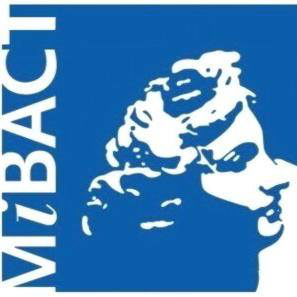Summary (English)
The excavations concentrated on Building 5¸ the ‘_navalia_’ and Buildings 3, 6 and 8 that were part of the ‘Imperial Palace’.
Building 5 (c. 240 × 60 m) divided into large bays 12 or 18 m wide separated in groups by corridors, was built in Trajan’s reign, when it was probably used for the construction and/or maintenance of commercial vessels or warships. The building underwent substantial alterations at the end of the 2nd century A.D., when many of the bays were subdivided, and in the late antique period when it was incorporated into the city walls and finally occupied by burials. The trench in the large bay opened in 2013 was extended as far as the eastern edge of the structure, where the 3rd century A.D. make-up was removed, on which the remains of the 3rd and 4th-5th century A.D. suspensurae were preserved. This revealed the 2nd century A.D. levels relating to the subdivision of the bays and then the Trajanic floors formed by make-ups and deposits of sand, with deep abrasions and numerous postholes.
The Imperial Palace is a complex that covers about 3 hectares on a peninsula at the centre of the port, situated between Trajan’s hexagonal basin and the earlier basin of Claudius.Building 3 is a rectangular structure with opus testaceum and opus mixtum walls, arranged around a central peristyle with vaulted colonnades and an opus spicatum floor with many rebuilds. In the 3rd century A.D., it housed a glass-making workshop.
During the 2012 and 2013 campaigns the building’s east side was identified, while the latest campaign concentrated on the southern sector, in particular the layers of fill were excavated down to a strip of opus spicatum floor running east-west between two pillars of the south colonnade.A new trench was opened in building 6 that uncovered the remains of an east-west corridor (paved with a mosaic of large black and white tessera), of a podium and of a make-up.
Building 8, built in the Trajanic era, shows a long period of use and evidence of structural alterations. This was a complex of rooms originally arranged on three levels along the north west front of the palace around a central peristyle, on the first floor corresponding to a cistern on the ground floor. During this campaign, excavations were concluded in the first floor corridor (Room 11) and the sondage in the corridor (Room 3). A sondage was also opened along the front facing onto the port of Claudius. In Room 11, the deposits dating to the 6th century A.D. onwards were removed. Below was the robbing level of an opus sectile marble floor of which only a small patch and the imprints in the make-up survived. The area of the door communicating with Room 9 was also excavated, revealing part of a polychrome mosaic already identified in another part of the same room during last season.
In the southern part of room 3 on the ground floor, where the complete stratigraphic sequence was preserved, from the demolition collapses to the floor levels, the Trajanic ramp was reached. In the trench along the north front, accumulations of rubble and sand from the demolition of the north facade were investigated and medieval pottery was recovered. Below were sandy and sandy-silt levels containing abundant shells, which abutted the Trajanic wharf.
- Simon Keay – University of Southampton
- Graeme Earl - University of Southampton
- Fabrizio Felici - Cooperativa Archeologica Parsifal
- Roberta Cascino - University of Southampton - British School at Rome
Director
Team
- Alice Onori – Sapienza Università di Roma
- Andrea Zocchi
- Camilla Panzieri – The British School at Rome
- Carlos Cabrera Tejedor - University of Oxford
- Christina Triantafillou – University of Southampton
- Claudia Luzzi – Università degli Studi Roma Tre
- Dragana Mladenovic - University of Oxford
- Elizabeth Richley - The British School at Rome
- Fabiana Battistin
- Federico Ugolini – King’s College London
- Hembo Pagi - University of Southampton
- James Miles
- John Fabiano - University of Southampton
- Kristian Strutt - Archaeological Prospection Services of Southampton
- Marco Conti
- Matthew Berry - The British School at Rome
- Peter Wheeler - University of Southampton
- Roberta Santarelli - Università degli Studi Roma Tre
- Maria Carmen Escobar - University of Southampton
- Diana Blumberg - University of Southampton
- Penny Copeland - University of Southampton
- Sabrina Zampini
- Stephen Kay – The British School at Rome
Research Body
- Soprintendenza Speciale per i Beni Archeologici di Roma
- The British School at Rome
- University of Southampton
Funding Body
Images
- No files have been added yet




